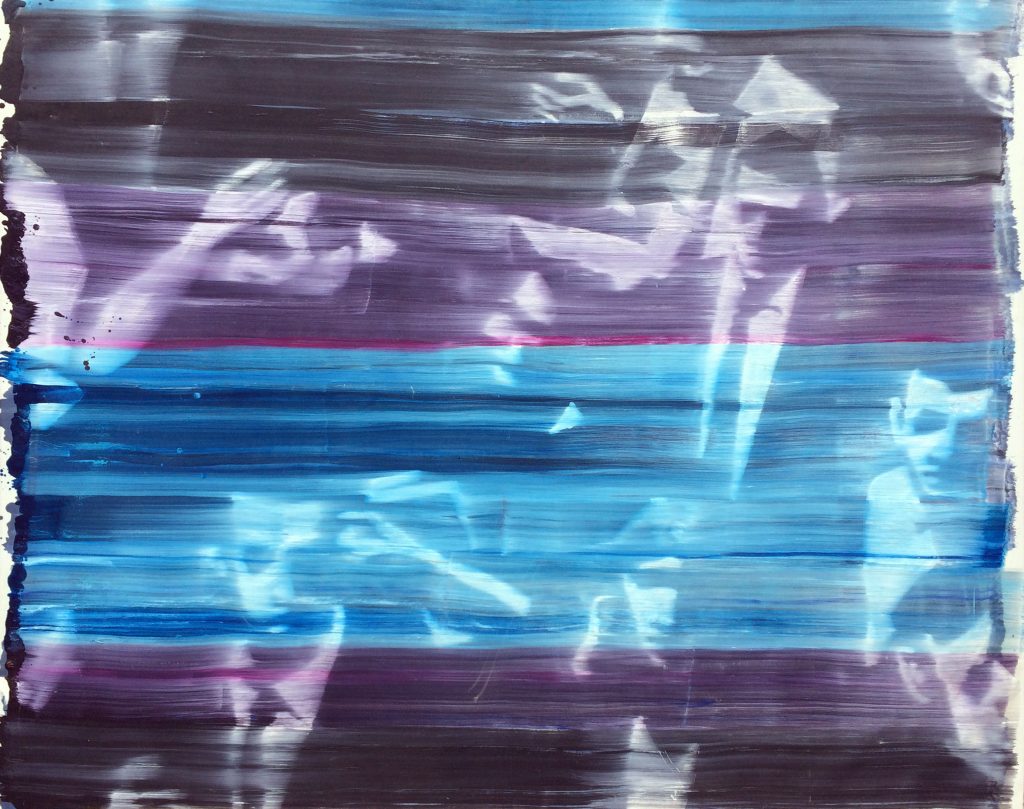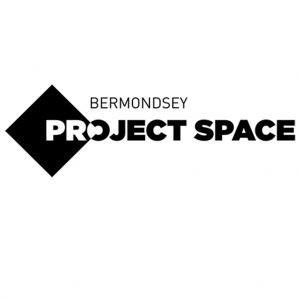1 – 12 September 2020
The world’s panoramic canvas was securely rolled up, folded or boxed for safety and put into what seemed like indefinite storage during the early months of this remarkable year.
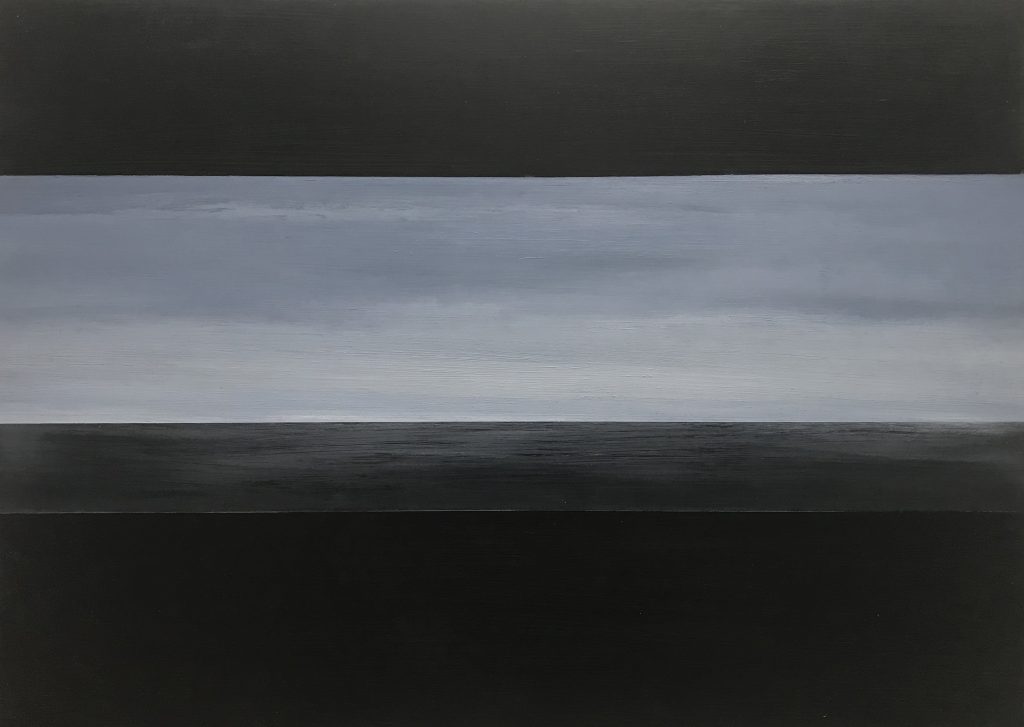
As part of the new season Bermondsey Project Space invited painter Alan Rankle to curate an exhibition. The result is Unfurl, where the artist’s works collectively unfold like a banner into the breeze of changing skies, to signal the recognition of a fast approaching totally unpredictable, constantly changing, scenario.
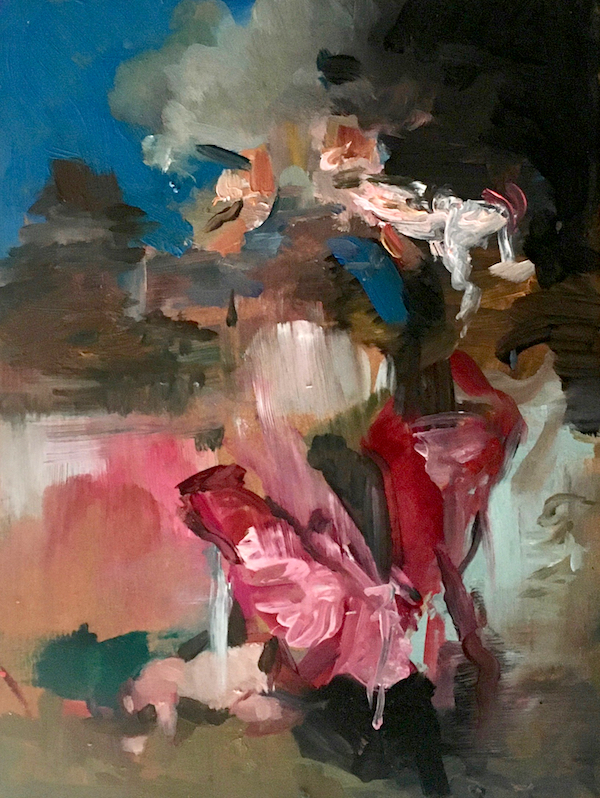
Unfurl features the works of a group of accomplished and challenging artists, all painters, who share an interest in making clear and confident commentaries on modern life while referencing and evolving the methods and techniques of classic painting.
The exhibition features paintings and prints by ANTHONY EYTON RA, CLAUDIA DE GRANDI, OSKA LAPPIN, MATTHEW RADFORD and CHARLOTTE SNOOK.
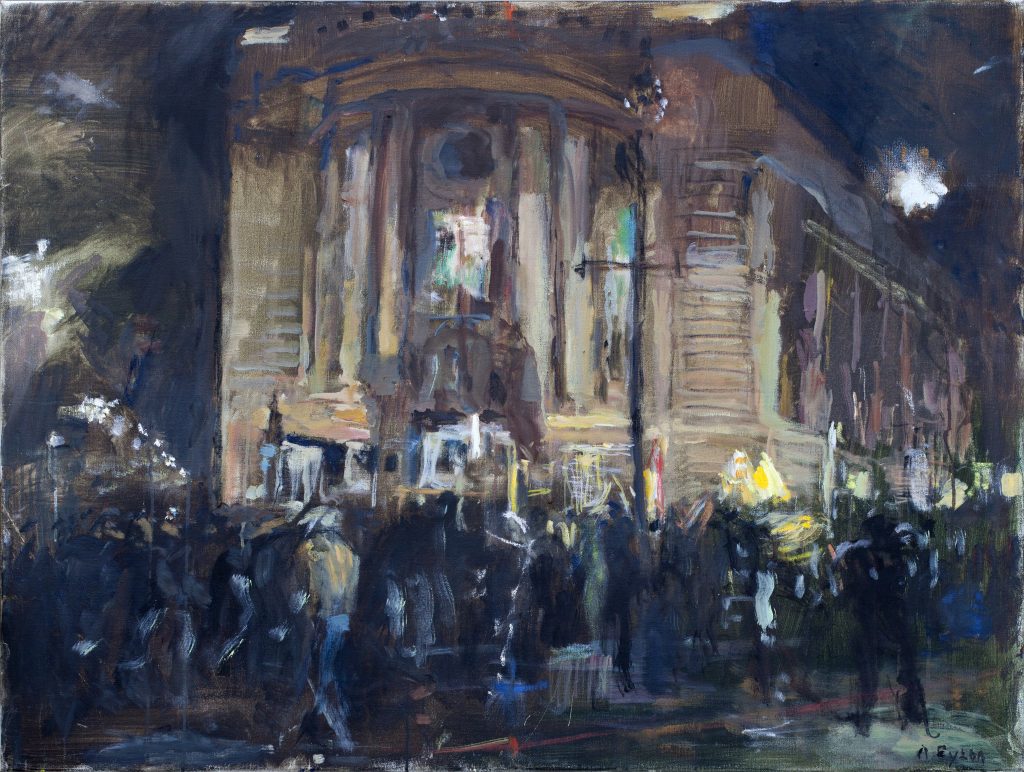
Anthony Eyton RA
The painting Demonstration at Lambeth Town Hall by Anthony Eyton is a sublimely configured, multi-layered work. On one level a topographical tour de force by a quintessentially London artist, featuring an iconic metropolitan building. Equally the painting is a strident and politically motivated rallying cry, giving a direct visceral response to the swingeing government cuts to shared mutually beneficial community assets; a strategic prelude to abolition and privatization of, in this case, the public libraries.
As a work by a senior Royal Academician dedicated to education for all the painting gains in cultural weight and presence.
Claudia De Grandi
Claudia De Grandi’s Waves & Horizons series, premiered at Bermondsey Project Space in 2019 and the more recent Moon and Sea paintings, when considered as meditative abstractions of the natural environment, seem to provide an idyllic antidote to the hectically paced catastrophic events occurring worldwide.
On closer reflection there is a darkly flickering undercurrent to these elegant evocations of nature. De Grandi shows oceans and skies in ecological freefall. Her paintings, as the leading environmentalist Tom Burke has written, depict glimpses of a threatened future.
Technically her paintings make subtle explorations of the relationships between different aspects of experiencing nature. In the words of artist John Stezaker,
“Claudia De Grandi’s works seem somehow tentative forms of colour field paintings, it is because this between space is both difficult and dangerously slippery. What is at stake, after all, is the collapse of the everyday orders of space and time in what Le Febvre called the rhymatics of the space/time continuum. De Grandi’s Waves are gentle undulations between the spatial orders of the infinite (the sea) and the abstract finitude of surface (the canvas).
“The philosopher Richard Wollheim saw this in-betweenness as an essential characteristic of modernism. He used the metaphor of a fold to describe this doubling of the visual fields of painting: both to see all at once and in particular; to see the world through the paint and to see the paint in the world.”
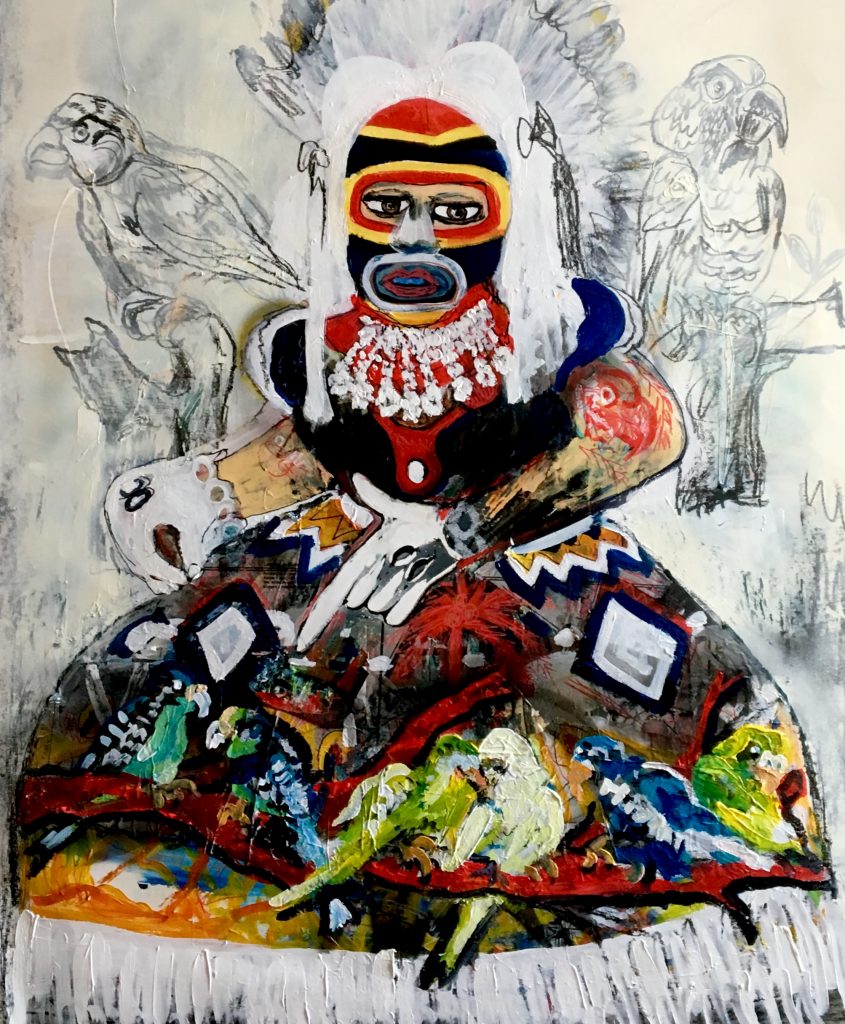
Oska Lappin
The paintings and woodblock prints of American artist Oska Lappin are rightly considered a significant contribution to the painterly tradition of socially relevant commentary. As her homeland fractures and implodes into crisis, Lappin’s creatively imagined works find an increasingly receptive audience. In a recent series she considers the juggernaut of colonial history as it crashes into the zeitgeist.
“I have imagined myself to be a scientific field hand with a sketchbook – somewhere between Robinson Crusoe and My Girl Friday, merging Katharine Hepburn, Coco Chanel and the ‘Other’ inhabitants of an exotic island.
“Creating compositional pathways are an adventure for me of lonesome hours with obsessive marks. The explorer’s linguistic palette promised to serve me well among the fascinating ‘tribes of the interior’. In my efforts to paint myself as a quintessential natural historian, I have in fact positioned myself within a far more complex system of storytelling…”
Charlotte Snook
Charlotte Snook conjures up the world at the beginning of modern times in Europe when the hierarchy of The Church and the power of the aristocracy was on the wane. In Snook’s 17th century artist’s studio, Picasso and Modigliani are hanging around, sharing a glass of absinthe and cracking a risqué joke with Tiepolo and his naked muse while waiting for Velasquez to drop by with the latest Django Reinhardt album.
The Adoration of the Golden Calf by Poussin and The Death of Samson by an unknown artist have been points of reference and exploration for some of Charlotte Snook’s recent works in the exhibition.
The Golden Calf narrative with it’s theme ofthe cult worship of a hugely costly idol has its obvious societal parallels but it was also the desire of the artist to depict in paint the pure glowing gold.
The Death of Samson as he pulls down the Temple around him has become, in Snook’s new work, a metaphor for contemporary dislocation and catastrophe.
Matthew Radford
A major painting London Tracks 2007 by revered British artist Matthew Radford presented in the exhibition embodies the frenetic energy of it’s namesake city. Radford’s critically acclaimed series recording the scale and pace of urban life is both vibrant and somber, and features innovative uses of color and paint.
Radford first paints people’s silhouettes – and moves over the canvases in huge swathes to ‘wipe away’ any individual identities within the masses.
The mystery and complexity of urban life fascinates Radford, and pulses throughout his paintings – acting as a metaphor for the shifting sands of shared experience.
Many of Radford’s recent works tread a thin line between the figurative and abstraction, evoking a darkness where the non-subject areas of a London scene spell both a paradoxical void and spatial freedom, and the subjects are swathed in veils. Perhaps Radford presents these more abstract images as gateways for seeing other things – the duality of the spiritual world and physical world which he believes can never be experienced separately. Like stills from a film noir, his images are alluring but shrouded in mystery
